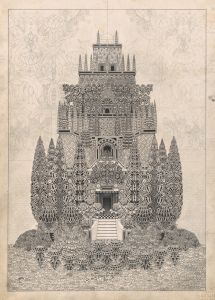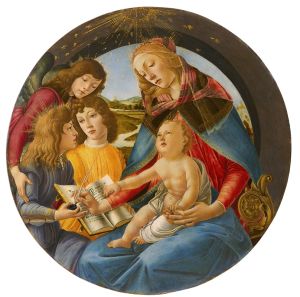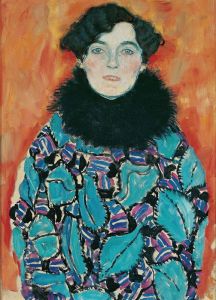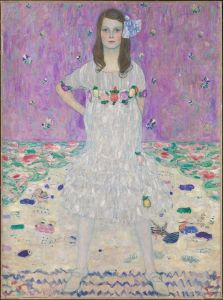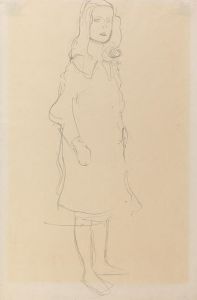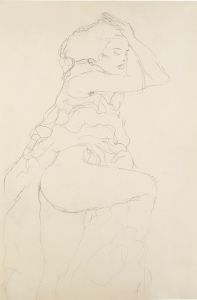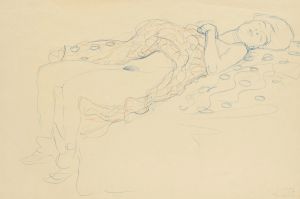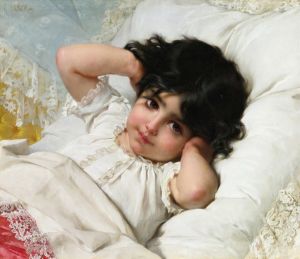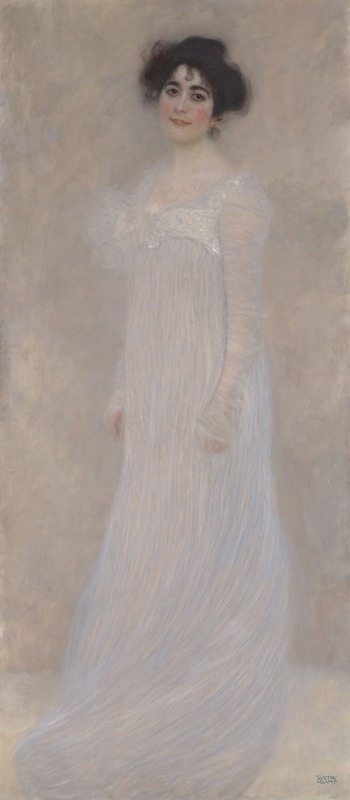
Serena Pulitzer Lederer
A hand-painted replica of Gustav Klimt’s masterpiece Serena Pulitzer Lederer, meticulously crafted by professional artists to capture the true essence of the original. Each piece is created with museum-quality canvas and rare mineral pigments, carefully painted by experienced artists with delicate brushstrokes and rich, layered colors to perfectly recreate the texture of the original artwork. Unlike machine-printed reproductions, this hand-painted version brings the painting to life, infused with the artist’s emotions and skill in every stroke. Whether for personal collection or home decoration, it instantly elevates the artistic atmosphere of any space.
Gustav Klimt, an Austrian symbolist painter, is renowned for his distinctive style and contribution to the Vienna Secession movement. Among his many portraits, "Serena Pulitzer Lederer" stands out as a significant work, reflecting both his artistic prowess and the cultural milieu of early 20th-century Vienna.
Serena Lederer, born Serena Pulitzer, was a prominent figure in Viennese society and a member of the influential Lederer family. The Lederers were known for their patronage of the arts, and Serena, in particular, was a notable art collector and supporter of Klimt. Her husband, August Lederer, was one of Klimt's most important patrons, and their collection included several of his works. This relationship between the Lederer family and Klimt was instrumental in the creation of the portrait.
The portrait of Serena Lederer was completed around 1899. It exemplifies Klimt's early portrait style, which was characterized by a focus on the sitter's face and upper body, often set against a richly decorated background. Unlike his later works, which are famous for their use of gold leaf and intricate patterns, this portrait is more restrained but still exhibits Klimt's attention to detail and his ability to capture the essence of his subjects.
In the portrait, Serena is depicted with a serene and contemplative expression, her gaze directed slightly away from the viewer. Klimt's use of color and light in the painting highlights her features, creating a sense of depth and realism. The background, while less ornate than in his later works, still provides a subtle contrast that enhances the subject's presence. This approach reflects Klimt's transition from traditional portraiture to the more decorative and symbolic style that would later define his career.
The painting is also significant for its reflection of the cultural and social environment of Vienna at the time. The turn of the 20th century was a period of great change and innovation in the city, with the Vienna Secession movement challenging traditional artistic norms and embracing new ideas. Klimt, as a leading figure in this movement, sought to break away from academic art and explore more personal and expressive forms of representation. His portraits, including that of Serena Lederer, are seen as part of this broader artistic evolution.
Unfortunately, the original painting of Serena Lederer, like many of Klimt's works, faced a tumultuous history. During World War II, the Lederer family's art collection was seized by the Nazis. Many of these works were lost or destroyed, and the fate of the "Serena Pulitzer Lederer" portrait remains uncertain. This loss is a poignant reminder of the cultural devastation wrought by the war and the enduring impact on the art world.
Despite its uncertain fate, the portrait of Serena Lederer continues to be celebrated for its artistic merit and historical significance. It represents a key moment in Klimt's career and offers insight into the vibrant cultural landscape of Vienna at the turn of the century. Through this work, Klimt not only captured the likeness of a prominent social figure but also contributed to the broader narrative of art history, leaving an indelible mark on the world of portraiture.





